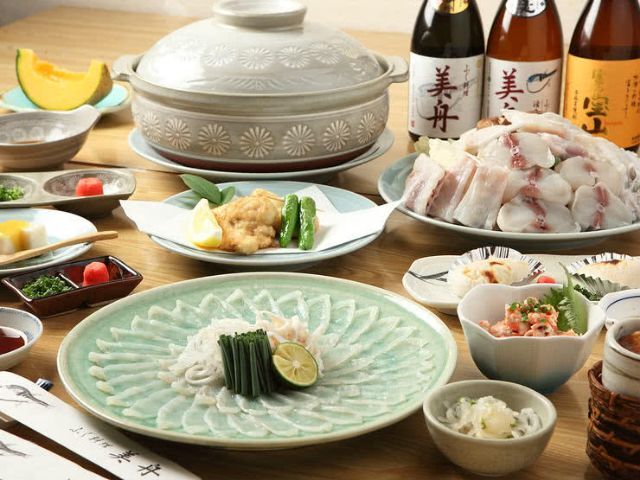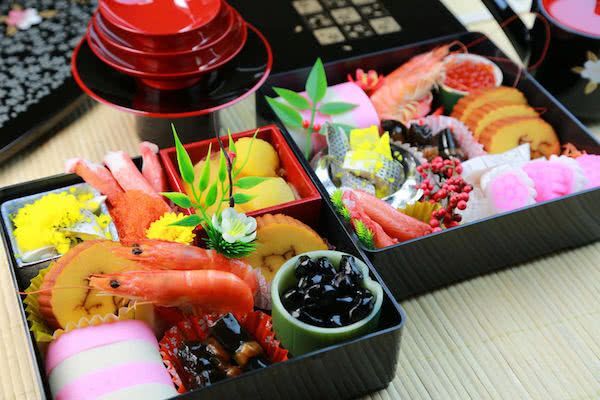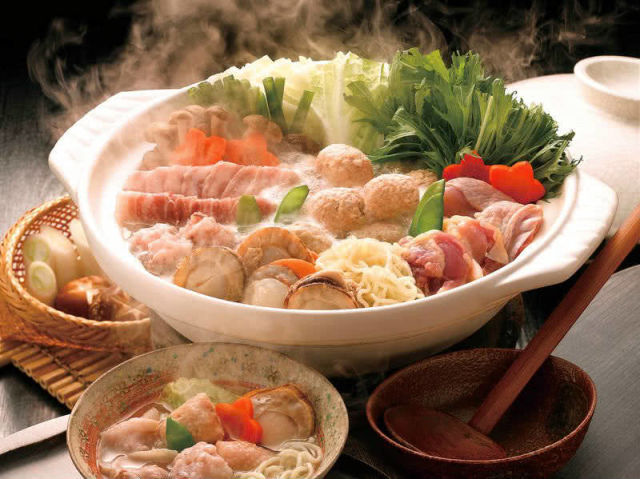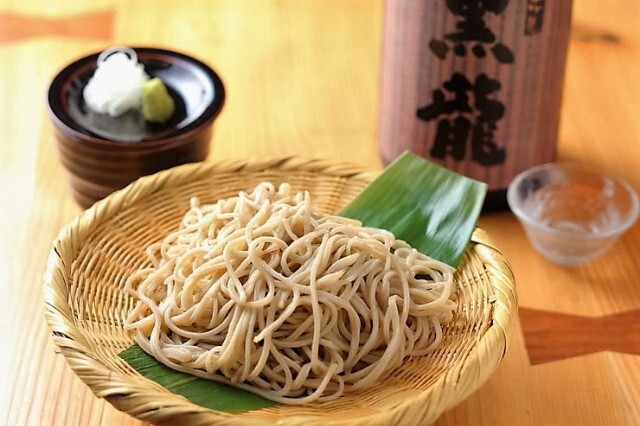![Osaka Station Restaurants showcase Japan's Foodie Capital]()
Osaka Station is the busiest train station in the western Kansai region of Japan, serving over two million passengers a day. The station building, called “Osaka Station City,” was newly remodeled in 2011 and offers various shopping, entertainment, and dining establishments in close proximity to the station area. With Osaka’s reputation as the culinary capital of Japan, it should come as no surprise that the area around Osaka Station boasts some truly excellent dining. Read on for 12 Osaka Station restaurants that highlight the epicurean genius of Japan’s top gourmet city.
Continue reading Osaka Station Restaurants showcase Japan's Foodie Capital
![Tokyo Skytree Restaurants - 12 Excellent Places to Eat]()
At 634 meters (over 2,000 feet), the Tokyo Skytree is the tallest structure in Japan, and the second-tallest in the world. The Tokyo Skytree is distinct in its neo-futuristic design, which provides a unique contrast to the traditional architecture of shrines and temples in the surrounding area. Visitors can enjoy a fantastic view of Tokyo city from the two observation decks located 300 meters and 450 meters up, and on a clear day one can see all the way to Mount Fuji in the distance. At the base of Tokyo Skytree is the Solamachi shopping center with over 300 shops, providing plenty of opportunities for souvenir shopping, and once you’ve worked up an appetite, there’s many restaurants near Tokyo Skytree to satisfy all tastes.
Continue reading Tokyo Skytree Restaurants - 12 Excellent Places to Eat
![Delectable Diversity at These 11 Kyoto Station Restaurants]()
One of the most popular travel destinations in Japan for both domestic and foreign tourists alike, Kyoto is an ancient city with over a thousand years of history. Kyoto Station, the city’s main transportation hub, was revamped to commemorate Kyoto’s 1,200 year anniversary in 1997. For such a historical city, one might expect the station to be a hallmark of traditional architecture; however, the building’s sleek design of curved glass and exposed steel beams—the second-largest station building in Japan, containing a hotel, movie theater, two shopping malls, several museums, and a department store—reinterprets the city’s traditional aesthetic in a modern way.
Continue reading Delectable Diversity at These 11 Kyoto Station Restaurants
![Tokyo Station Restaurants Offer Portals into World Cuisine]()
Tokyo Station is often described as the figurative center of Japan, the heart that connects the capital metropolis of Tokyo to the rest of the country via its many arteries of bullet train lines. Over 3,000 trains run through the station each day, and it is the fifth busiest in the world by number of passengers. Tokyo Station’s iconic Marunouchi facade is a traditional red brick building often likened to the Amsterdam Central Station as well as Victorian period London architecture, and it gives way to the Imperial Palace just a short distance away.
Continue reading Tokyo Station Restaurants Offer Portals into World Cuisine
![Eating Fugu: The Deadly (and Delicious) Japanese Pufferfish]()
>Fugu, Japanese pufferfish, is notorious for the highly toxic poison—tetrodotoxin—contained in its organs. Despite its deadly potential, fugu has been eaten in Japan for hundreds of years. As it was initially unknown how to properly prepare the fish, there were many fatalities from fugu consumption. For this reason, the eating of fugu was banned from around 1570 to 1870. These days fugu is commonly available in restaurants and supermarkets throughout Japan, but must be prepared by a licensed chef, and is prohibited to be prepared in the home—-even today, the Japanese royal family is forbidden from eating it.
Continue reading Eating Fugu: The Deadly (and Delicious) Japanese Pufferfish
![Where to Eat in Osaka, from Izakaya Restaurants to Yakitori]()
Osaka, located in the western region of Kansai, is a city famous for its food culture, and prides itself on being the gourmet capital of Japan. From the Dotonbori canal district lined with various dining establishments to the Shinsekai area serving up famous local dishes, Osaka is a true foodie mecca. There’s even an old Japanese saying that people from Osaka will eat and drink themselves out of house and home. If you’re visiting Osaka and want to uncover the different types of Osaka restaurants, here's a guide to the diverse array of food experiences that await.
Continue reading Where to Eat in Osaka, from Izakaya Restaurants to Yakitori
![Osechi Ryori, Delectable Epitome of Japanese New Year Food]()
>Osechi ryori refers to a beautiful and delicious medley of traditional Japanese new year food, usually eaten during the first three days of the new year. It has been enjoyed in Japan since the Heian period, when it was actually considered taboo to cook food during those first three days! As such, women spent the last few days of the previous year cooking and preparing a variety of dishes that kept well and could be eaten over the holiday. The foods are stored in a traditional multi-tiered lacquer box called "jubako" and eaten at room temperature.
Continue reading Osechi Ryori, Delectable Epitome of Japanese New Year Food
![Where to Eat Sushi in Tokyo: A Neighborhood Guide]()
When dining in Japan’s metropolitan capital of Tokyo, there are few foods more native to the city than sushi. Tokyo is the birthplace of nigiri-style sushi, the iconic ball of vinegared rice topped with a beautiful cut of fresh fish or other seafood, which developed as a lunchtime food for laborers, merchants, and artisans during the 1800s. Nigiri sushi is also known as Edomae sushi, after Tokyo’s former name, “Edo”.
Continue reading Where to Eat Sushi in Tokyo: A Neighborhood Guide
![Regional Nabe: A Local’s Guide to Japanese Hot Pots]()
With the days growing colder, nothing quite satisfies like nabe, a type of Japanese hot pot. Named after the traditional clay pot (“nabe”) in which this dish is cooked and served, nabe is a steaming broth filled vegetables, tofu and with meat or seafood. Nabe has been enjoyed in Japan for as long as clay cookware has existed, and today there are many regional varieties featuring local ingredients specific to different areas. A hotpot meal is often enjoyed at home cooked on a small, portable gas burner while gathered around a heated kotatsu table with family or friends. It can also be enjoyed at izakaya and other restaurants specializing in Japanese cuisine.
Continue reading Regional Nabe: A Local’s Guide to Japanese Hot Pots
![Best Soba in Tokyo: 5 Recommended Noodle Restaurants]()
Soba is a type of noodle that has been eaten in Japan for centuries. Long and thin, soba noodles have an appearance similar to spaghetti, however are a little chestnut in color and nutty in flavor, as they are made from buckwheat flour rather than wheat flour. The use of buckwheat flavor also makes soba lower in calories than other types of noodles, as well as being an excellent source of fiber and protein. Soba noodles can be prepared from dried factory-cut noodles or eaten fresh and hand-cut, known as “te-uchi soba”.
Continue reading Best Soba in Tokyo: 5 Recommended Noodle Restaurants











